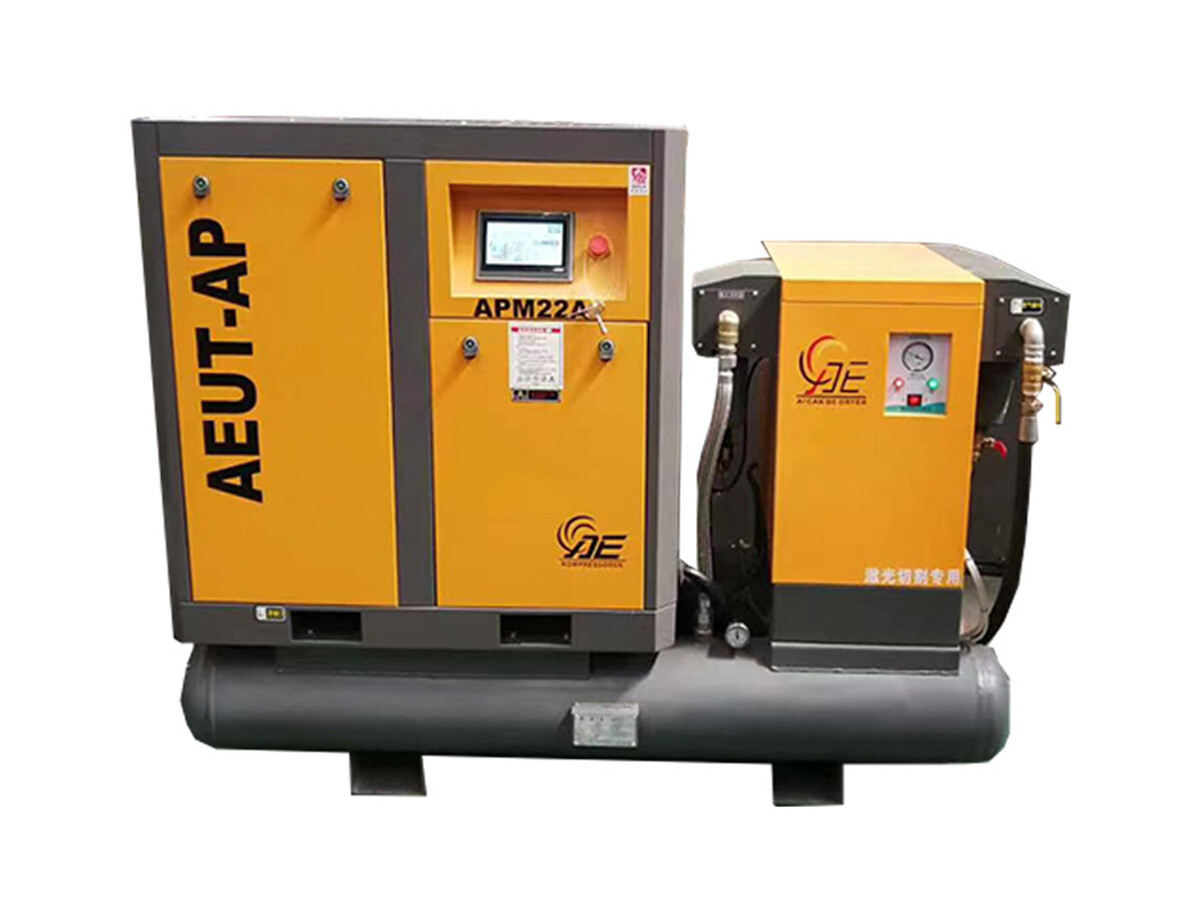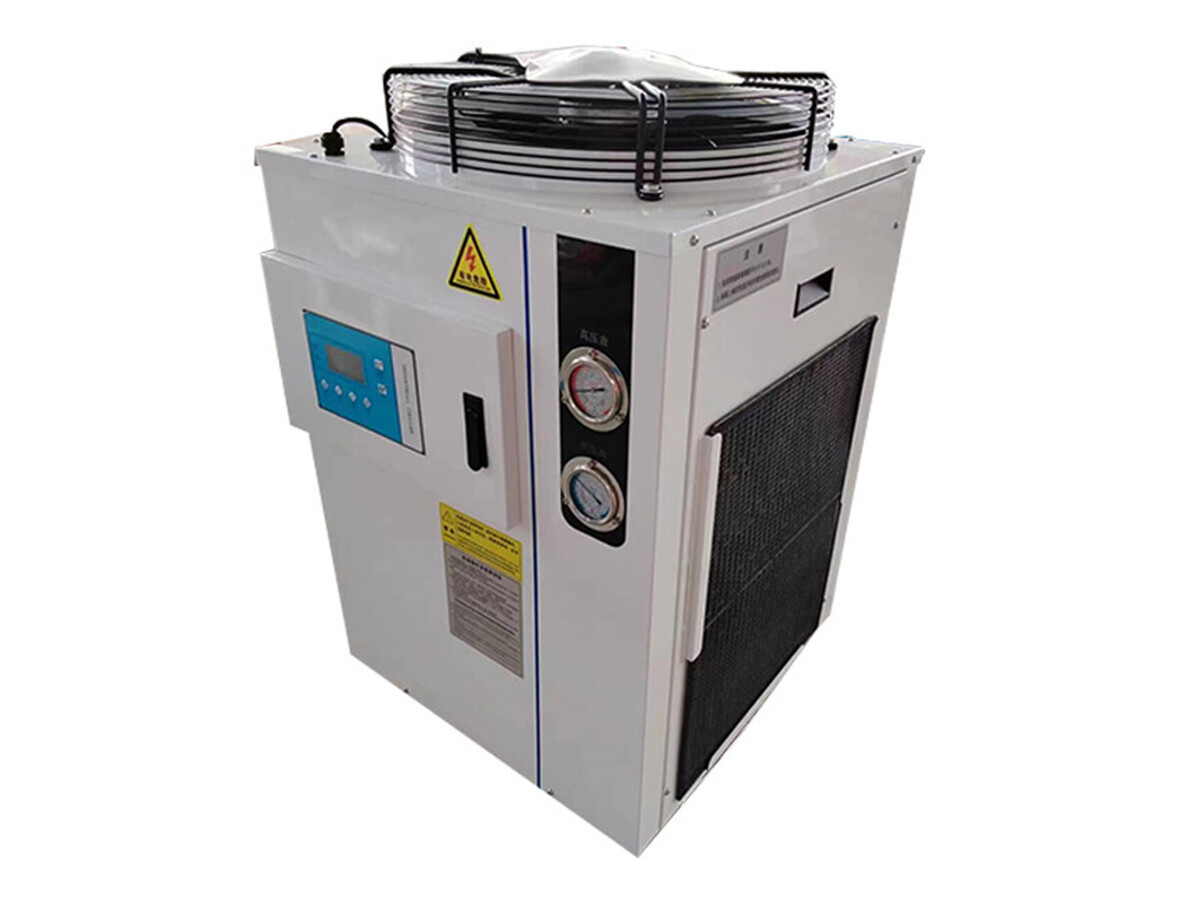1.Laser Chillers: Critical Cooling for Laser Systems
Water chillers are vital for maintaining stable temperatures in laser cutting equipment, directly impacting beam quality, cutting accuracy, and component longevity.
Laser Source Cooling:
High-power laser generators (e.g., CO₂, fiber lasers) produce significant heat during operation. Chillers regulate the temperature of laser diodes and optical components, preventing thermal drift that could degrade beam focus and cutting precision.
Cutting Head Protection:
Chillers cool the cutting head and lenses, reducing the risk of overheating-induced damage or contamination from molten debris. This ensures consistent performance during prolonged operations.
Process Stability:
Stable cooling prevents fluctuations in material expansion, enabling clean cuts on metals like stainless steel, aluminum, and titanium, even at high speeds.
Energy Efficiency:
Modern industrial water chillers use variable-speed compressors and energy recovery systems, cutting power consumption by up to 30% while supporting 24/7 operations.
2. Integrated Air Compressors: Clean Air for Optimal Cutting
Integrated air compressors provide reliable, oil-free compressed air essential for auxiliary processes in laser cutting:
Assist Gas Supply:
Compressed air (or specialty gases like nitrogen or oxygen) is used as an assist gas to blow away molten material, ensuring clean edges and preventing re-solidification on cuts.
Optics and Nozzle Cleaning:
Oil-free air compressors deliver contaminant-free air to purge cutting heads and lenses, maintaining clarity and preventing residue buildup that could scatter the laser beam.
Pneumatic Automation:
Compressed air powers automated material handling systems, such as sheet loaders and conveyors, streamlining workflow in high-volume production environments.
Energy-Saving Designs:
Integrated air compressors with variable-speed drives (VSD) adjust output to match real-time demand, reducing energy waste and operational costs.

3. Synergy Between Chillers and Air Compressors
Combined systems maximize laser cutting efficiency:
Chillers maintain laser stability, while compressors supply clean assist gas and automate part handling.
For reflective materials like copper or brass, chillers prevent thermal distortion, and compressors ensure consistent gas pressure for flawless cuts.
4. Key Advantages in Laser Cutting Applications
Enhanced Cut Quality:
Precise cooling and contaminant-free air minimize burrs, dross, and edge oxidation, reducing post-processing needs.
Extended Equipment Lifespan:
Stable temperatures and clean air protect lasers, optics, and motion systems from wear and contamination.
Cost Savings:
Energy-efficient chillers and compressors lower utility bills, while reduced downtime boosts productivity.
Versatility:
Compatible with diverse materials (e.g., acrylic, carbon steel) and thicknesses, supporting industries from automotive to aerospace.

Conclusion
In the competitive laser cutting industry, water chillers and integrated air compressors are essential for achieving precision, speed, and reliability. Chillers ensure thermal stability for consistent beam performance, while oil-free compressors deliver clean air for assist gas and automation. By integrating these technologies, manufacturers enhance cut quality, reduce operational costs, and meet the demands of high-precision applications—from intricate automotive components to aerospace-grade materials.
If you want to buy a high-quality laser chiller unit and Integrated air compressor for your laser cutting cooling in China,
Are you looking for a reliable water chiller and air compressors supplier to support your business,
Please contact DARKO sales representative to custom cooling system and compressed air solution suitable for your applications.
